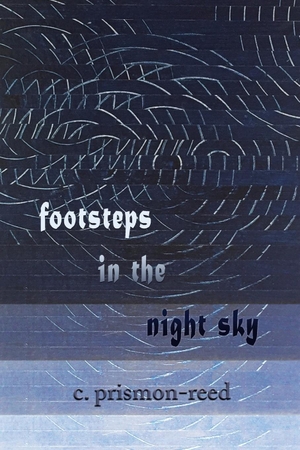Carol has been writing poetry since junior high school, and early adopted a simple use of image and minimalist language, though the sound of a poem and its space on the page is also a part of how she measures the form and flow of expression. She says: I typically write first drafts in pencil; probably because it was the tool I picked up when I learned to write. I was then (and still am) immediately impressed with the feel of the lead against the paper and how the words just seem to magically appear directly from my mind. If color and fragrance are the essence
Mehr
Weniger
of a rose, a poem is like this. As what one remembers about a rose is the color and fragrance together, so what one remembers of a poem is its essence: the tone, the way sounds flow, the resolution as the idea comes into focus - the image(s) it conjures, the feeling(s) it evokes. Exactly how this happens is (or ought to be) so natural, almost imperceptible, that it is just accepted as being there, framing the message perhaps but not calling undue attention to itself; the form is left rather for after-the-act reflection - or a second reading. … I have begun thinking of my poems as a sort of stream-of- consciousness poetry - from my mind to yours (as Mr. Spock of Star Trek might say), a moment of shared image or insight which might then become your memory, as when breathing in a fragrance and seeing the form and color ignites the spontaneous response: ah! that rose! The author holds a Master of Arts in English (Linguistics), and had a few early haiku and one poem published (under pen names) in the 1970s. More recently her poems have appeared in Sugar Mule (online: #49, 2015) and as a finalist in the Jewish Currents Raynes Poetry Competition anthology Borders and Boundaries (2017). A couple of her poems were selected and translated by Hanyong Jeong and published in a Korean bilingual anthology PoemCafe (2009 and 2014), now sadly discontinued. Concurrent with this latest work, she began a study of Chinese and Korean calligraphy, with a view to understanding the written forms used by the classical poets of China and Korea. The mixing of Chinese and Korean scripts used by scholar-officials beginning in the Joseon dynasty, following the development of a written script linguistically matched to spoken Korean, has been of special interest. Her independent studies subsequently resulted her translating many of these poets, particularly of the Tang dynasty Chinese (c. 700-900), including favorites such as Li Bai, Du Fu, and Bai Juyi, which she has compiled in two 60-poem manuscripts (one bilingual). Her art name, SongLin [ ¿¿ / ¿¿ ] (pronounced Songlim in Korean), used on her latest calligraphy, is also used in her translation work, as appropriate. While a couple of her early collections were recorded with the Library of Congress, this is her first published work.
